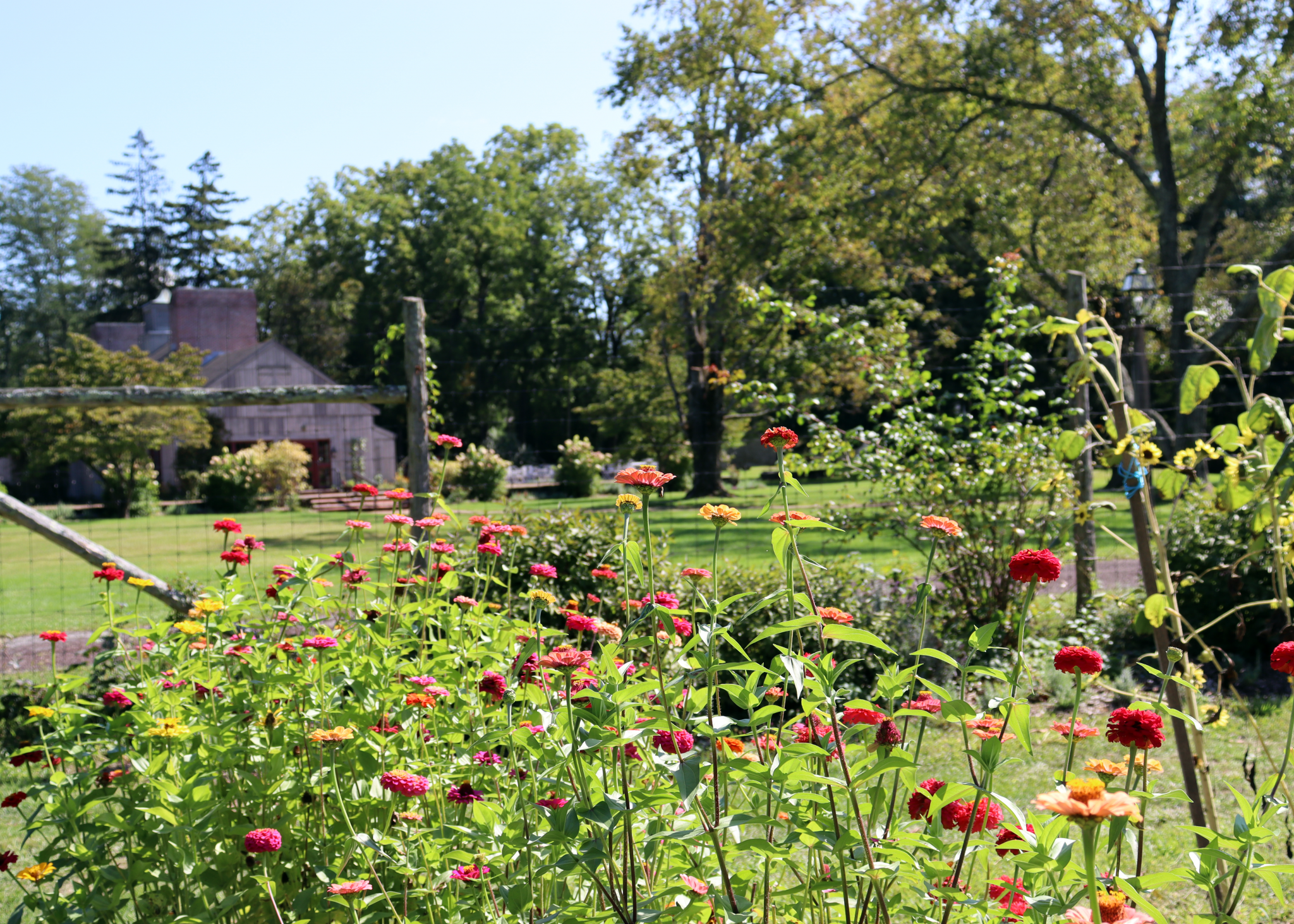From Scraps to Soil: Composting at Waterloo Village


JAM Catering serves tens of thousands of meals a year, and while the mostly empty plates that come back tell us that people are definitely enjoying the food, there’s usually a little left over.
We put the unneeded buffet food to good use through our staff meal program, which provides daily meals for around 80 JAM employees. Our staff meals may not be fancy, but they’re always pretty good!
Dealing with the true table scraps is a bit trickier, but we have a plan for them. We collect these scraps and add them to the compost heaps at our Pennsylvania and New Jersey farms. At JAM’s venue, Waterloo Village, Farmer Gina Barkovitch and her team combine food scraps with dried leaves, straw, and farm debris to decompose and create rich, nutrient-packed compost. This compost is perfect for improving the soil, which, in turn, supports the growth of new crops of vegetables and fruits. This year, JAM is on track to convert approximately 14,000 pounds of table scraps into this valuable “black gold” organic fertilizer.
Mother Nature’s Recycling
Composting is a natural recycling process that transforms seemingly useless food waste into valuable, fertile soil. Before JAM took over stewardship of the property, the fields at Waterloo had been used for years as a music festival site and the organic content of the soil was a rather poor 1.8%. Now, as a result of eight years of composting and other techniques, we’ve improved it to over 6% and it’s getting better every year, all without using chemical fertilizers.
Composting offers a wide range of benefits that the quick fix of chemical fertilizers can’t match. It helps the soil retain water, prevents erosion, conserves water, and encourages deeper root growth for better mineral nourishment. It feeds the bustling community of beneficial microbes, fungi, and nematodes that enhance plant immunity, fight pests, and make nutrients more accessible to plants. In other words, compost helps plants and the soil they grow in to thrive, resulting in healthier and tastier produce!
Composting also diverts food waste from landfills, where it would likely generate methane gas, a potent contributor to climate change. By choosing to compost, we’re reducing the environmental footprint from our events.


Building the Perfect Pile
To create great compost, you’ll need a mix of carbon-rich “brown” materials (dried leaves, wood chips, straw, for example) and nitrogen-rich “green” materials (grass clippings, plate scrapings, coffee grounds, fruit and vegetable scraps).
Almost anything from nature can be composted, even eggshells and bones. While these materials take longer to break down, they enrich the compost with calcium and phosphorus, supporting flowering and fruiting plants. The brown and green materials are layered together, like the layers in a wedding cake, to achieve just the right carbon-to-nitrogen ratio.
The Action Heats Up
Within a few days of depositing scraps onto our carefully constructed compost piles, the process heats up the pile’s interior to around 140 degrees. This heat effectively eliminates most pathogens, fly larvae, and weed seeds. After reaching these high temperatures, the pile is periodically stirred with a small bucket loader to mix the outer layers with the hot inner core, and the whole thing is left to “cook” again. By stirring the pile and adding carbon-rich materials, we create a thriving environment for microbes to transform nitrogen-rich table scraps into beautifully finished compost in just a few weeks – the magic of biology!
In the spring and throughout the fall, the Waterloo farmers incorporate the finished compost into their planting routines. They use it in vegetable fields and under fruit trees and berry bushes in the orchard, allowing nature to work its magic toward growing delicious produce.
Once the “fruits” of our labor are ready, they find their way to our kitchens, where our talented chefs craft dishes for our guests to enjoy. With many empty plates, and a few bits left over, the scraps are collected and the whole cycle starts again!


